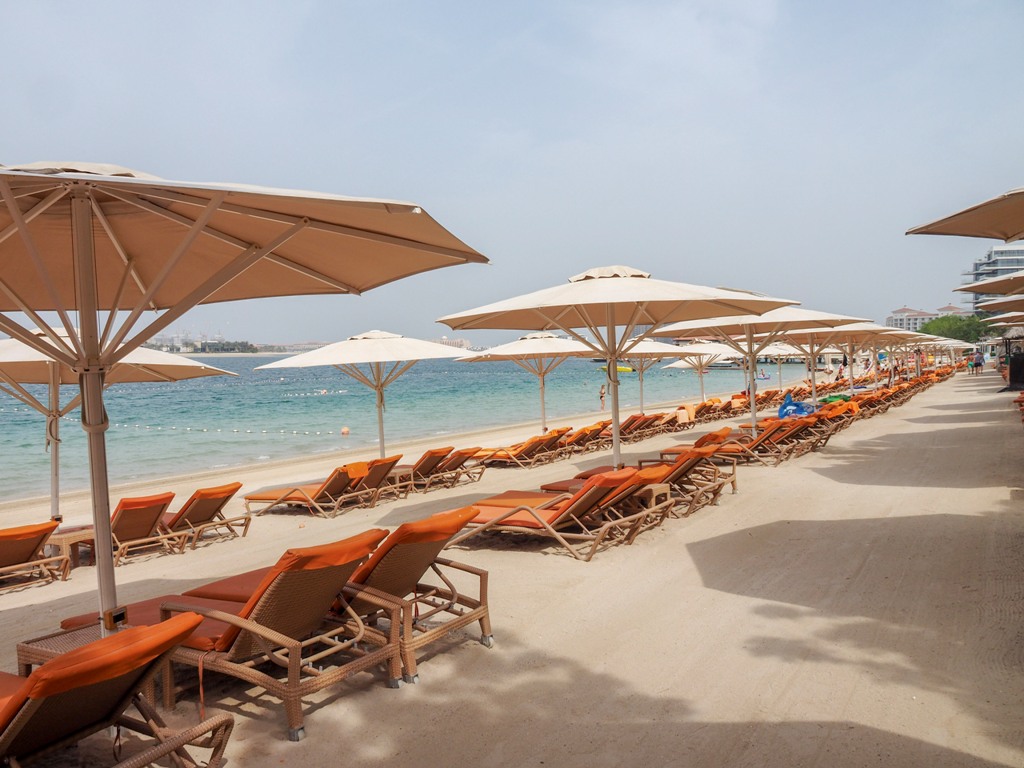Do we need to rethink the best time of the year to travel

How climate change will impact when and where we are going to travel in future
Summers are for travelling … or aren’t they?
There is no question, summer holidays are the most popular time to travel. After all, who does not love lazy beach days or spending time at the pool when it’s hot outside?
There are several other reasons to travel in summer. Most importantly, school holidays along with annual company vacations are typically falling into the summer months. Plus, in many parts of the world summer is still the time you can expect the weather to be more predictable, warm, and sunny.
That said, looking back at the summer of 2023, it might be time to start asking some serious questions about the best time to travel and to which destination.

Disturbing stories about heatwaves with temperatures exceeding 40°C for prolonged periods, devastating wildfires, storms, and flooding, along with severe water shortages topped the news almost every day from spring through to early fall last year.
Climate change is sure to become a serious game changer in travelling.
To be honest, there have always been very good reasons to avoid the peak season and travel during shoulder season instead. From lesser crowds to lower prices, and more moderate temperatures allowing you to be more active. But with those crazy conditions of last summer likely to happen more regularly in the future, travel patterns are almost certain to change.
Why shoulder season will become the most popular time to travel
The benefits travelling during shoulder season are well-known. Looking at the strongly increased number of travellers in spring and fall/autumn, it’s safe to day shoulder season is indeed not far from being the most popular time to travel.
The benefits of the shoulder season range from lower prices to less crowded locations and of course already/still nice and warm weather in most places from march to May and September to November. Depending on where you go, even warm enough to spend time at the beach.
Spring is not just a great time to travel because of already warmer temperatures and longer days (though this reason should not be underestimated). It is also the time when blossom season will turn many places into colourful wonderlands.

Fall is the perfect time to travel if you are looking to still squeeze in some time on the beach. Though temperatures are nowhere near summer temperatures, when the sun is out certain destinations still hit temperatures that range from the lower to the higher 20°C during the day. In addition, water temperatures are still up after the hot summer months.
Here are some examples of places for a fall beach holiday, considering average max. temperatures in October.
- Dubai: 35°C
- Los Cabos, Mexico: 33°C
- Phoenix, Arizona: 32°C
- Cyprus: 29°C
- Tenerife: 28°C
- Marrakech: 28°C
- Malta: 27°C
- Malaga: 26°C
- Algarve: 23°C
Travelling during off-season is going to be more popular
Travelling off-season might still be far less popular than travelling during shoulder season. However, with shoulder season now attracting already fairly high number of travellers in certain destinations and milder temperatures during the winter months, this is already starting to change.
Off-season typically means the winter months except for winter holiday destinations, and therefore you can expect colder weather and higher chance of rain. However, unless you want to spend time at the beach, there are many destinations worth exploring during off-season.

Some of the perks travelling off-season? Prices are way more affordable, you will have many of the local attractions almost to your own, and staff will be less stressed (paying more attention to your needs). In addition, more and more destinations aim to become year-round travel destinations. This means, more businesses will remain open in the off-season period, more events will take place during off-season, and more and more places will implement local reward programmes particularly for off-season visitors.
Here is a list of great destinations to visit off-season if you don’t mind risking some days of less-pleasant weather:
- Italy: city stays across the country, southern Italy for still milder weather, Tuscany for a culinary stay and perhaps even some snow.
- Algarve, Portugal: still mild day temperatures though higher chance of rain and wind

- Andalucia, Spain: this winter, temperatures in the southernmost part of Spain climbed to over 20°C on some days. While likely not the norm, milder temperatures allow to discover places like Granada, Cordoba, Jerez de la Fronera, Malaga, and off course the region’s capital Sevilla without the typical large crowds.
- Basque Country for a culinary spread and snowcapped mountain ranges
- Santorini, Greece: take in the stunning whitewashed villages and hike the island without the crowds.
- California, road trip through the U.S. Southwest, Arizona, New Orleans/Louisiana
- Japan, New Zealand, Brazil, Argentina
- City breaks: although cities are typically a year-round destination, there are less visitors during the colder months of the year.
Personally, I had some of my best travel experiences during off season.
Travellers will embrace new ‘summer’ destinations
If you still plan to travel during the summer – as you might be forced by school holidays, vacation calendars, or other reasons – the destination of your summer holiday is likely going to change.
Due to now often scorching hot temperatures in the traditional summer hotspots like the European south, cooler destinations will become more popular for summer holidays. Beach time included.

Scandinavia, Iceland, the UK (Scottland in particular), Ireland, the northern parts of Canada, and Alaska are becoming increasingly popular summer destinations for travellers.
If you don’t mind travelling long-distance, it is winter from June to August in the southern hemisphere while temperatures can still be mild in several of these destinations.